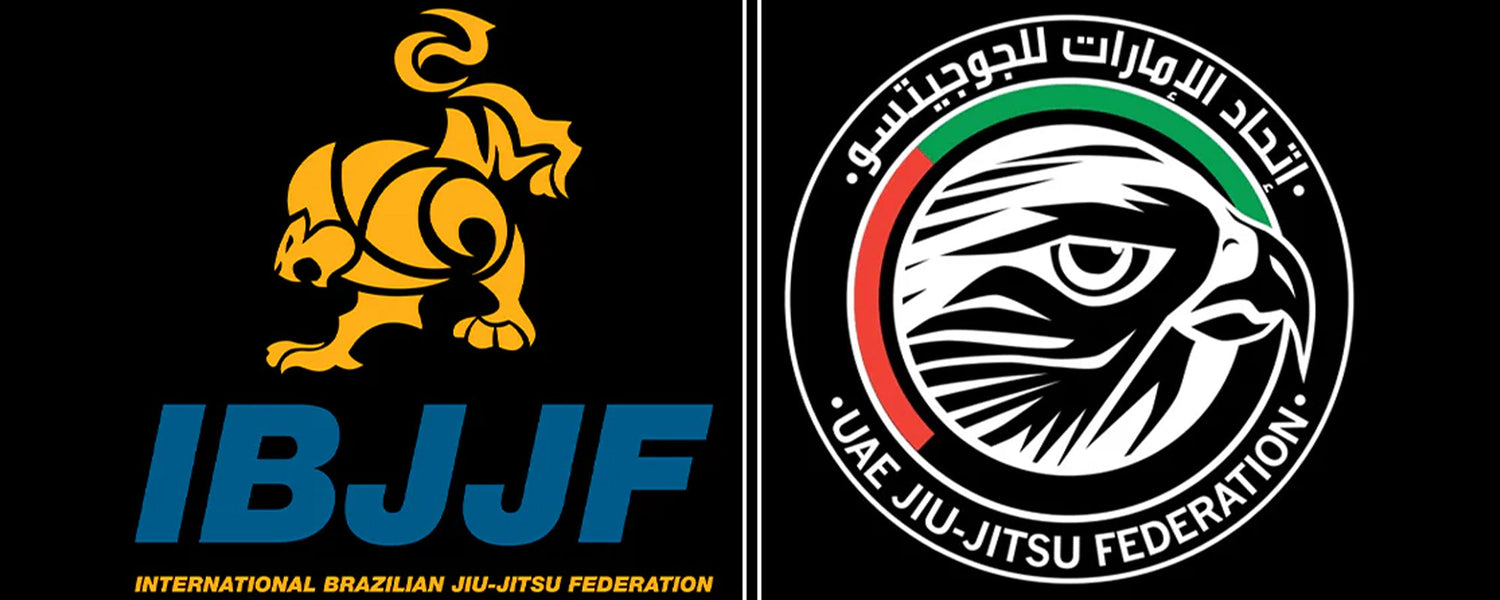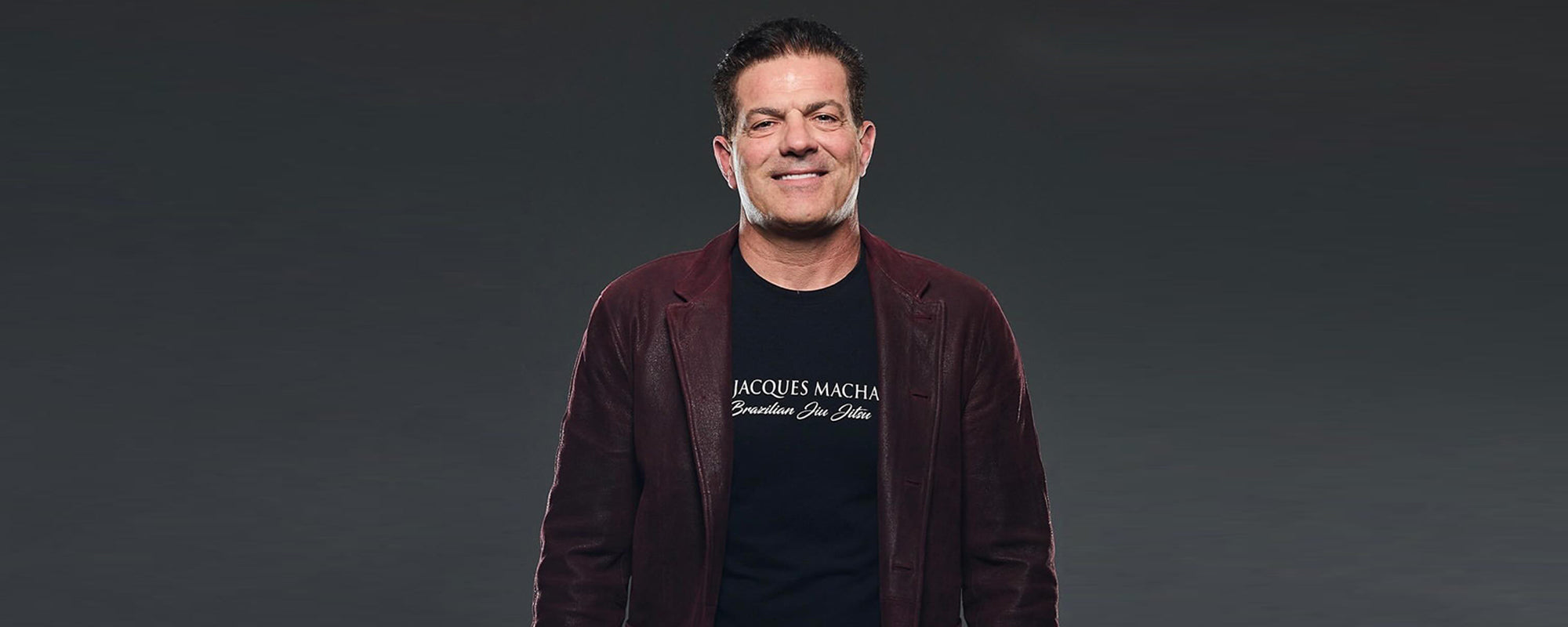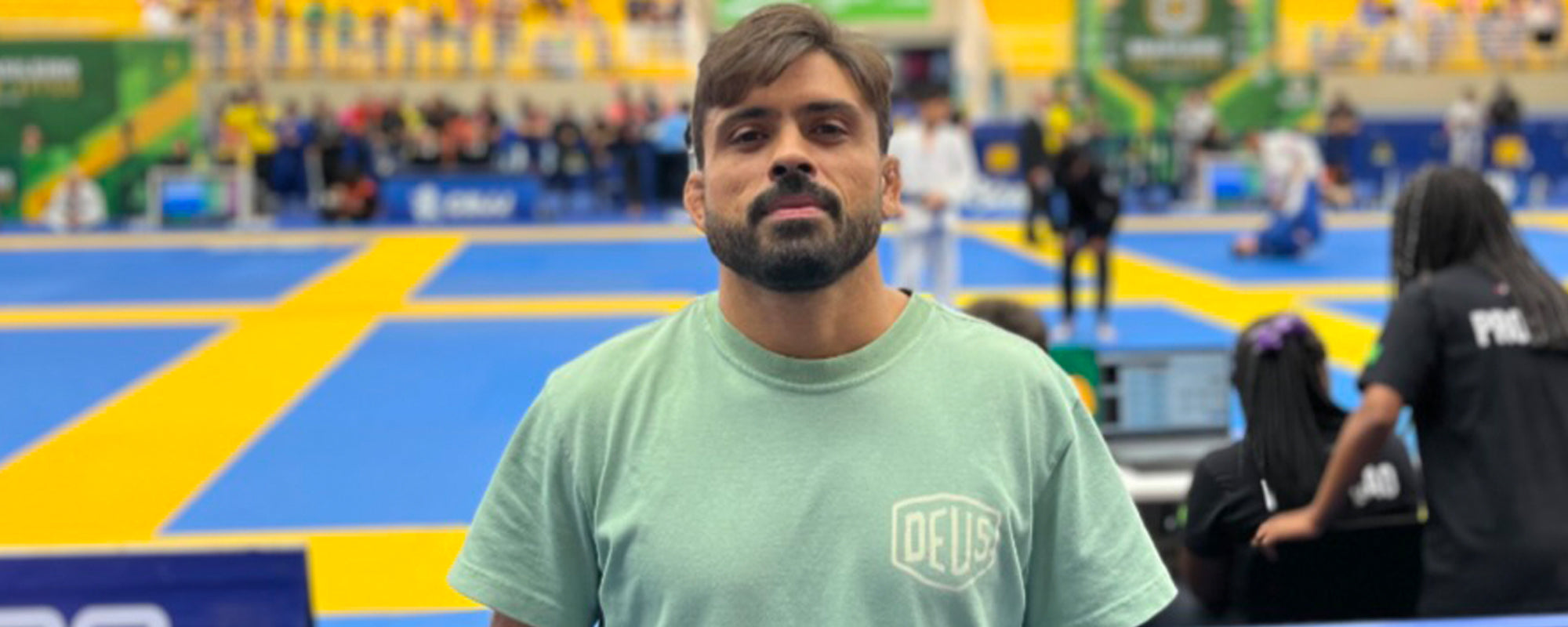Table of content
This article will discuss the similarities and differences between the governing bodies of IBJJF and UAEJJF.
1. IBJJF
IBJJF, the International Brazilian Jiu-Jitsu Federation i organizes Brazilian Jiu-Jitsu contests all over the world including the European Open Championship, Pan Jiu-Jitsu Championship, World Jiu-Jitsu Championship, and World No-Gi Championship. Carlos Gracie, the head of the largest Jiu-Jitsu association Gracie Barra, was the Pioneer founder of IBJJF.
2. UAEJJF
UAEJJF, the United Arab Emirates Jiu-Jitsu Federation was created in 2012 with the assistance of the President of UAE, Mohammed Bin Zayed Al Nahyan. Jiu-Jitsu is supported by the Federation in a big way. In order to grow the sport nationally and internationally, the Federation's mission is to introduce and execute policies that develop the sport in partnership with different government agencies and educational institutions.
3. IBJJF Banned Techniques
A list of banned techniques in IBJJF
- Heel Hooks
- Spinal Choke
- Scissors Takedowns
- Knee Reaping
- Suplex Takedowns
- Backward Finger Bending
- Slams
- Locks Twisting The Knees
- Toe Hold
- Jumping The Closed Guard
4. UAEJJF Banned Techniques
A list of banned techniques in UAEJJF:
- Submission Stretching the Legs Apart
- Choke with Spinal Lock
- Straight Foot Lock
- Forearm Choke using Sleeve
- Frontal Guillotine Choke
- Omoplata
- Triangle
- Arm Triangle
- Lock Inside the Closed Guard with Legs Compressing Kidneys or Ribs
- Wrist Lock
- Single Leg Takedown while Attacking Athlete has his Head Outside his Opponent’s Body
- Biceps Slicer
- Calf Slicer
- Knee Bar
- Toe Hold
- Slam
- Spinal Lock
- Heel Hook
- Locks Twisting the Knee
- Knee Reaping
- Scissor Takedown
- In Straight Foot Lock, Turning in the direction of the Foot, not Under Attack
- In the Toe Hold, Applying Outward Pressure on the Foot
- Bending Fingers Backward
- Grab the Opponent’s Belt and Throw him to the Floor on his Head
- Suplex Takedown Technique, Landing with the Opponent's Head or Neck on the Ground
5. IBJJF Uniform Requirements
5.1. Gi Fabric
IBJJF Gi fabric must be made of cotton or cotton-like fabric. The material shouldn't be so silky or stiff that it would be difficult for an opponent to grab it. A Gi made of woven cloth is required for all divisions in the junior, adult, master, and senior categories.
5.2. Gi Patches and Color
The Gi must be of royal blue, black, or white color.
The top and pants of GI should be the same color, Gis with a collar that is a different color than the rest of the Gi is not permissible.
Painting GIs is prohibited unless it is in the form of a sponsor logo, and only on those parts of the GI where patches are allowed.
Patches should only be affixed on the area as described in the IBJJF rule book. All the patches in unauthorized areas of Gi will be removed.

5.3. Gi Measurement
Top of the Gi must reach the BJJ athlete’s thigh and the Gi sleeves should come to no more than 5 cm from the wrist. GI pants should not extend the tibial malleolus (ankle bone) by more than 5 cm.
The Gi inspection team will measure the Gi in following parameters:
- Gi lapel thickness: 1.3cm
- The width of the Gi collar: 5 cm
- The opening of the sleeves at full extension: 7cm

5.4. Belt Requirement
Athletes except black belts must wear a 4-5 cm wide colored belt according to his/her rank, with a black tip. For the black belts, the tip should be red or white. The belt should be fastened with a double knot that is tight enough to keep the Gi top in place, be worn over the top, and be wrapped twice around the waist. The belt should hang between 20 and 30 cm from each end and fasten with a double-knot.
6. UAEJJF Uniform Requirements
6.1. Gi Fabric
According to UAEJJF rules, Gi fabric should be made of cotton or cotton-like thread. The fabric must not be too silky or hard, so it becomes difficult for the opponent to grab it. A Gi made of woven cloth is required for all divisions of junior, adult, master, and senior categories.
Kimonos with EVA or a similar material lining the collar are acceptable as long as the size and stiffness requirements specified in the UAEJJF Rules Book are adhered to.
6.2. Gi Patches and Color
Gi’s color must be black, royal blue, or white. Tops, pants, and collars of different colors are not allowed in UAEJJF.
Gi’s that have been painted are not allowed unless the painted part is an academy or sponsor logo and only on the parts of the Gi where patches are permitted by UAEJJF.
Patches are only allowed in specific areas as described by the UAEJJF rule book. The Gi inspectors will take out any patches that are placed in any unapproved area of the Gi.

6.3. Gi Measurement
The Gi top must reach the athlete’s thigh and the Gi sleeves should not extend more than 5 cm from the athlete's wrist when the arm is stretched horizontally.
The length of Gi pants shouldn't extend more than 5 cm over the ankle bone.
The Gi inspection team will measure the Gi in the following ways:
- Gi lapel thickness: 1.3cm
- Width of Gi collar: 5cm
- The opening of the sleeve at full extension: 7 cm

6.4. Belt Requirements
The athletes except for the black belt should wear a 4.5 cm wide belt with the color according to his/her rank, with a black tip. While for black belts, the tip should be red or white. To keep the Gi top closed, the belt must be worn over the top, twice wrapped around the waist, and knotted twice. Each end of the belt should dangle 20 to 30 cm after being tied in a double knot.
7. IBJJF Points
| Takedown | 2 Points |
| Sweep | 2 Points |
| Knee on Belly | 2 Points |
| Guard Pass | 3 Points |
| Back Control | 4 Points |
| Mount | 4 Points |
| Rear Mount | 4 Points |
To get points, each point awarding position must be maintained for three seconds minimum. It should be noted that these rules have certain definitions that must be applied. For instance, merely holding someone's belt does not constitute back control. You must get both of your hooks inside your opponent's legs for three seconds for the referee to count your back control.
The purpose of these rules is to encourage a fair game. Despite the temptation to attempt a sloppy submission in the hopes of receiving a tap, you earn points for establishing dominating control.
8. UAEJJF Points
| Takedown | 2 Points |
| Sweep | 2 Points |
| Knee on Belly | 2 Points |
| Pass the Guard | 3 Points |
| Mount | 4 Points |
| Rear Mount | 4 Points |
| Back Control | 4 Points |
In UAEJJF contests, a mat referee will award points any time an athlete maintains a position for three seconds. The mat referee will indicate and display the amount of points won by each participant by making hand gestures with either his right or left hand, depending on which contender has scored.
When an athlete is in a position to score points, the mat referee will only award points if the athlete completely escapes a submission hold and maintains that position for a three-second count. If an athlete engages in a point-scoring position while in a submission hold and then releases the hold without maintaining the position, they will not receive an advantage.
9. IBJJF Submission
Submission is the most exciting way to win a Jiu-Jitsu match. The submission rules are pretty simple if an athlete taps his/her hand, foot, or say tap the match is over and the opponent will be declared the winner.
A scream also counts as a tap in IBJJF, if a competitor screams in pain, the referee can stop the match immediately.
10. UAEJJF Submission
Rules for submission in UAEJJF are quite similar to IBJJF. A submission will occur, if an athlete makes noise in pain, taps the ground, or makes any clear indication to pause the competition.
11. IBJJF Weight Division
IBJJF weight classes are divided into 9 categories based on gender and age.
Master Gi Male
| Weight Class | Max. Weight |
|---|---|
| Rooster | 57.7 kg |
| Light-Feather | 64 kg |
| Feather | 70 kg |
| Light | 76 kg |
| Middle | 82.3 kg |
| Middle Heavy | 88.3 kg |
| Heavy | 94.3 kg |
| Super Heavy | 100.5 kg |
| Ultra Heavy | No Limit |
Master No-Gi Male
| Weight Class | Max. weight |
|---|---|
| Rooster | 55.5 kg |
| Light-Feather | 61.5 kg |
| Feather | 67.5 kg |
| Light | 73.5 kg |
| Middle | 79.5 kg |
| Middle Heavy | 85.5 kg |
| Heavy | 91.5 kg |
| Super Heavy | 97.5 kg |
| Ultra heavy | No Limit |
Masters Gi Female
| Weight Class | Max. weight |
|---|---|
| Rooster | 48.5 kg |
| Light Feather | 53.5 kg |
| Feather | 58.5 kg |
| Light | 64 kg |
| Middle | 69 kg |
| Middle Heavy | 74 kg |
| Heavy | 79.3 kg |
| Super Heavy | No Limit |
Master No-Gi Female
| Weight Class | Max. Weight |
|---|---|
| Rooster | 46.5 kg |
| Light Feather | 51.5 kg |
| Feather | 56.5 kg |
| Light | 61.5 kg |
| Middle | 66.5 lg |
| Middle Heavy | 71.5 kg |
| Heavy | 76.5 kg |
| Super Heavy | No Limit |
Juvenile Gi Male
| Weight Class | Max. Weight |
|---|---|
| Rooster | 53.5 kg |
| Light-Feather | 58.5 kg |
| Feather | 64 kg |
| Light | 69 kg |
| Middle | 74 kg |
| Middle Heavy | 79.3 kg |
| Heavy | 84.3 kg |
| Super Heavy | 89.3 kg |
| Ultra Heavy | No Limit |
Juvenile No Gi Male
| Weight Class | Max. Weight |
|---|---|
| Rooster | 51.5 kg |
| Light Feather | 56.5 kg |
| Feather | 61.5 kg |
| Light | 66.5 kg |
| Middle | 71.5 kg |
| Middle Heavy | 76.5 kg |
| Heavy | 81.5 kg |
| Super Heavy | 86.5 kg |
| Ultra Heavy | No Limit |
Juvenile Gi Female
| Weight Class | Max. Weight |
|---|---|
| Rooster | 44.3 kg |
| Light Feather | 48.3 kg |
| Feather | 52.5 kg |
| Light | 56.5 kg |
| Middle | 60 kg |
| Middle Heavy | 65 kg |
| Heavy | 69 kg |
| Super Heavy | No Limit |
Juvenile No-Gi Female
| Weight Class | Max. Weight |
|---|---|
| Rooster | 42.5 kg |
| Light Feather | 46.5 kg |
| Feather | 50.5 kg |
| Light | 54.5 kg |
| Middle | 58.5 kg |
| Middle Heavy | 62.5 kg |
| Heavy | 66.5 kg |
| Super Heavy | No Limit |
12. UAEJJF Weight Division
UAEJJF is the leading competitor of IBJJF. Below you can see the weight divisions of UAEJJF.
| Males (Over 18) | Female (Over 18) | Boys (16-17) | Girls (16-17) |
|---|---|---|---|
| -56 kg | -49 kg | -46 kg | -40 kg |
| -62 kg | -55 kg | -50 kg | -44 kg |
| -69 kg | -62 kg | -55 kg | -48 kg |
| -77 kg | -70 kg | -60 kg | -52 kg |
| -85 kg | -90 kg | -66 kg | -57 kg |
| -94 kg | -73 kg | -63 kg | |
| -110 kg | -81 kg | -70 kg | |
| -94 kg | -82 kg |
13. IBJJF Penalties
IBJJF penalties are listed below:
13.1. Disciplinary Penalties
This list includes using foul language, making rude gestures, and disrespectful behavior towards officials and other team members. Even if the game hasn't begun or is already ended, the referee has the authority to fine the player "at the moment of infraction".
13.2. Technical Penalties
If athletes are not engaging in the fight and wasting time, they would get technical penalties. The behavior of the fighter counts as stalling, when an athlete has more points and stays in a position to waste time without engaging in grappling and eliminating the opponent’s chances of scoring.
13.3. Serious Penalties
If an athlete kept leaving the mat area in order to restart a fight, he/she would get a serious penalty. The IBJJF recently announced that an opponent will receive two points if a fighter stands up to prevent a sweep or submission.
A contestant will be eliminated if he/she got four serious penalties.
In the case of a tie in points and advantages, the winner will be the contestant with the fewest penalties.
13.4. Severe Penalties
If an athlete attempts an illegal move like a spinal lock or suplex, he/she would get a severe penalty. The penalty for any illegal moves is instant disqualification.
14. UAEJJF Penalties
The mat referee may penalize an athlete in the following cases:
- The athlete can get a penalty in the case of stalling when he/she avoids fight engagement and fleeing from submission.
- When the mat referee detects an athlete is trying to prolong the fight and not showing any active movement, the athlete is given 20 seconds to make a movement; if no movement is made, the athlete would get a penalty.
- When any of the competent takes off his Gi in order to avoid a fight or allow himself rest.
- When either of the competent steps out of bounds to avoid a fight or gain time, he/she would be given a penalty.
- When either of the athletes inserts his/her hand into the opponent’s belt or puts fingers into the sleeves.
15. Last Words
IBJJF and UAEJJF play a significant role in the fight organization and popularity of Jiu-Jitsu. Both federations have a slight difference in rules and regulations for competitions, as discussed in this article but serve for the betterment of Jiu-Jitsu.













Leave a comment
This site is protected by hCaptcha and the hCaptcha Privacy Policy and Terms of Service apply.